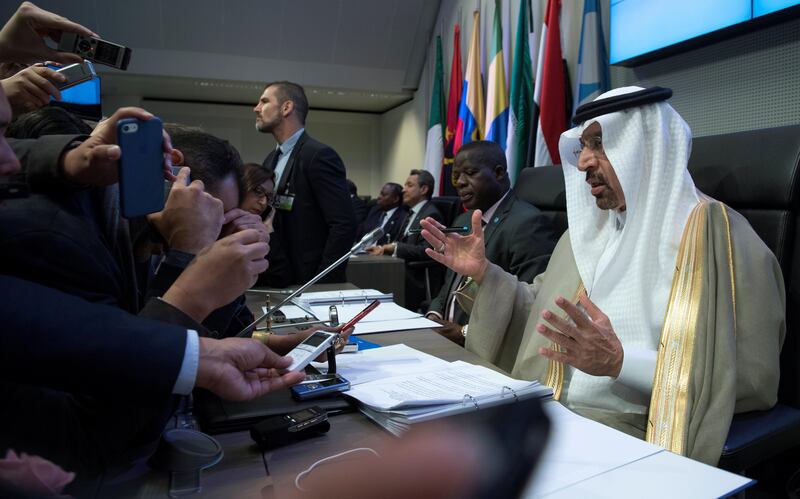The messages from the latest Opec meetings over the summer appeared positive. The oil cartel assured investors that the rebalancing process in the oil markets is working. Other headlines were highlighted. Growth beneficial to the oil industry is picking up in Asia. Commitment to the existing supply cuts was firmly renewed. On the surface, it all seemed to be going well.
There was just one hitch. In spite of the upbeat rhetoric, Brent Crude struggled to make it over the US$55 mark despite the ripples of assurances. Throughout the months of July and August the prices appreciated, but oil investors were still too skeptical and kept taking profit. The delayed reaction to Opec’s interventions can be explained by several factors on the supply-and-demand sides.
The global oversupply and competition from US Shale persistently challenge Opec's rebalancing strategy. There are tenacious doubts that the move to the $50-$55 per barrel range can be sustained. The upcoming US rigs count and stockpiles reports easily have the potential to pull the carpet from underneath the oil price. They've done so many times since the beginning of the year. Every time the oil price rises on improved Opec sentiment, it is cut back by increasing US Shale output. This trend is likely to continue after the setbacks caused by hurricane damage.
As production rises in the US, its imports of foreign oil are falling, even from long-term supplier Saudi Arabia. Saudi oil exports have fallen off to around half-a-million barrels per day, the lowest level in five years. Question is, will the US even feel the pinch anymore, given its ramped-up output?
_____________
Read more:
Oil demand rising as output cuts reduce supply glut, says IEA
Oil marks best week since July as demand forecasts improve
____________
At this point, it is a chicken-and-egg situation. Saudi Arabia reduces output to the US and makes headlines. And yet the US doesn't appear to need the extra external supply in any case, given its stronger domestic production. Since the new administration took over, it has had a policy of isolationism. This direction has had different political and economic effects. Isolationism can take various forms. One of the approaches is to favour domestic industries even to the detriment of foreign trading partners.
President Donald Trump's policy is to keep powering forward on domestic oil. Potential US sanctions on Venezuelan oil appear to be yet another economic isolationist signal. Coming at the same time as Saudi Arabia limiting US exports, it appears that a wall is being built between Opec members' output and US Shale.
The shift in the balance of power in the oil markets happened relatively fast. In the last three years, oil prices took a dive into deep waters. The global slowdown pressured commodity prices as demand slumped. Although overall recovery is on its way, investors are still easily spooked amid the ongoing uncertainty. Each economic indicator has the potential to trigger rapid profit taking and reversals for oil. The effect on oil-producing countries' revenues is obvious.
The current situation has changed the scenario for Opec. In the fourth quarter, investors are expecting even more than the already-agreed on cuts. There’s awareness that Opec cuts were undermined by non-compliance in the summer. So, commitment to the existing cuts doesn't mean that much to the oil traders. At this point, the oil markets want to see more actions to reduce supply and stimulate demand.
Shifting the focus from selling to the US and selling to Asia instead is another possible course of action. There’s only one caveat here: softer demand for Opec oil in the US should not be reflected in Asia. The slightest sign of softening demand in Asia could have harsh knock-on effects on Opec export prices.
Hussein Sayed is the chief market strategist at FXTM






